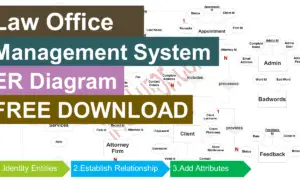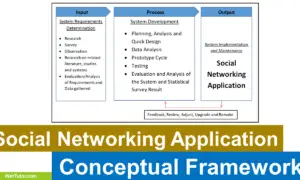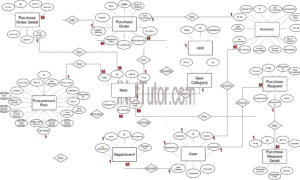IPO Model Conceptual Framework of Service Call Management System
This article will show you how to create a conceptual framework for the capstone project titled Service Call Management System. The input, process, output (IPO) model was used to create the conceptual foundation for this investigation.
About the Project
The capstone project, entitled” Service Call Management System,” is designed to transform service calls to a centralized platform. The said project would allow clients to log in and lodge calls to the tech support if they encountered issues and difficulties with their purchased products. The tech support team will diagnose the issue and provide them with the necessary actions to perform via a call to solve the problem and achieve satisfaction.
Conventionally, businesses that offer a product to customers have a technical support team. Their role is to help customers receive the full benefits and satisfaction from the product they purchased. The tech support team is on standby to receive calls from customers who encounter difficulties operating and using the products they bought. The customers usually call via telephone or mobile to report issues and let the tech support diagnose the problem. This method is not too ideal because it is costly and requires valuable time and effort. In some cases, customers may encounter difficulties connecting to the company/s tech support due to some barriers.
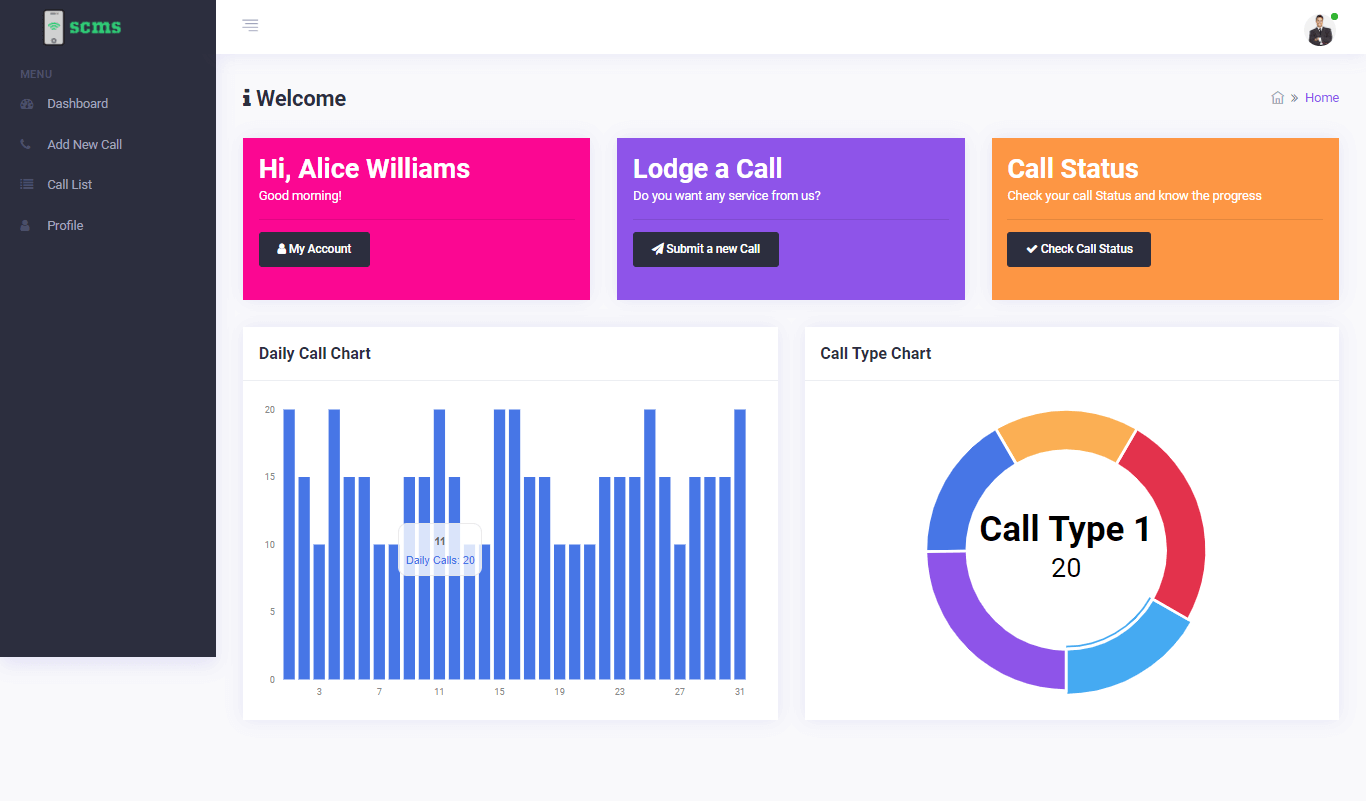
Objectives of the Study
- To introduce an innovative platform to streamline service calls.
- To make service calls easy and timely.
- To increase the service efficiency provided by the company’s tech support team.
- To allow clients to seek and receive help from technical supports quickly and conveniently.
- To seamlessly streamline transactions between technical support and clients.
Conceptual Framework/Model
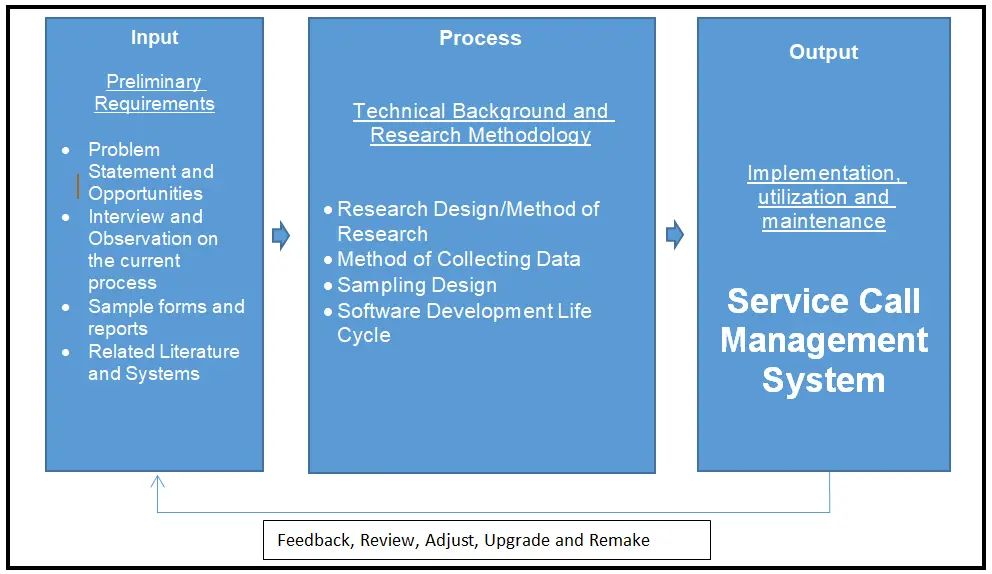
The graphic above depicts the conceptual framework for the project dubbed Service Call Management System. It is based on the IPO model, commonly known as the input, process, and output model.
Input
The input phase or the knowledge requirement stage consists of the following:
- Problem Statement and Opportunities – the researchers selected to conduct a study on service call management system that users can use to inquire various services conveniently.
- Interview and Observation on the current process – the researchers conducted a preliminary interview and observation method to further understand the nedd for a service call management system.
- Sample forms and reports – the researchers also gathered the sample forms and reports. This serves as a guide in the preparation of form design and reports of the system.
- Related Literature and Systems – the researchers conducted a research on the different literatures and related systems to serve as a guide in the development of the Service Call Management System.
Process
- Method of Research
The researcher employed descriptive-developmental research methods. The typical processes of planning, conducting, and reporting a research project—problem definition, literature reviews, and research procedures—are described in this paper (link.springer.com). Descriptive research explains what the study is about. The study focuses on the current condition, with the goal of discovering new truths. It is concerned with existing relationship conditions, methods that succeed, ongoing processes, and developing effects. Descriptive research entails components of interpretation of the relevance of what is presented, with the primary emphasis on the finding of ideas and insights (www.slideshare.net).
- Method of Collecting Data
The researchers used interviews as a way to get in-depth and to gather data. It consists of one person interviewing another person for personal or detailed information. The interviewer will ask questions from a written questionnaire and recorded the answers in order to summarize the findings.
- Development of Research Instrument
Before collecting data, the researchers built their own research instrument. The Good and Scate questionnaire was used to validate this self-created assessment by three experts. The researchers employed common criteria defined in McCall’s Software Quality Model surveys to test the system’s quality.
- Software Development Life Cycle
Analysis and Quick Design
During Analysis and Quick Design, the researchers conducted an interview with the respondents at the study’s location. Respondents were given the opportunity to make comments and requests about how the system should be designed and built. Following data collecting, the researchers sketched out an early design for the newly built system.
Data Analysis
All of the data, information, and user requirements were analyzed by the researchers. The project lifetime began during this phase. The researchers attempted to comprehend the facts and knowledge on how to construct the system, as well as to envisage how the generated system would be advantageous to the operators. It analyzes end-user needs to guarantee that the new system meets their expectations.
System Design
The researchers began working on the system. This phase outlines the required requirements, features, and activities that satisfy the functional requirements of the designed system that is now in place. This phase determines how the system will function.
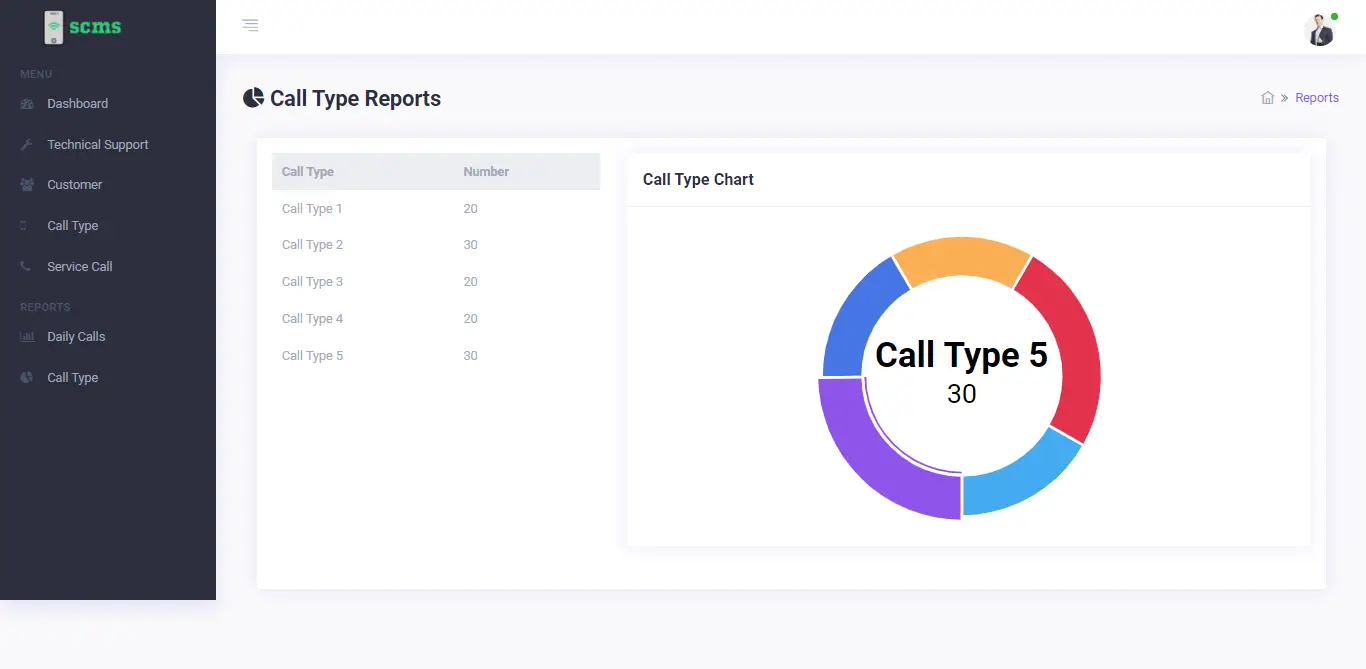
Prototype Cycle
This phase includes the process of creating a system model, displaying it, and revising the data collected. The researchers first built a prototype model based on the anticipated design, which they then showed to the respondents. Following the completion of the prototype, the researchers exhibited the system’s functionality, the flow of how it runs, and the functions of the system’s components. The final stage is refinement. At this point, the researchers upgraded the system depending on the operator’s additional requirements. Based on the needs expressed by the respondents, enhancements to the flow, functionality, and features were made. This enabled the researchers in developing an initial set of system requirements.
Testing
This includes the support for the designed system, which was installed and tested by three (3) professionals and its intended users. This component was placed into production by transferring data and components from the old system to the new system.
Output
The study’s final outcome is the Service Call Management System, a web-based platform that will streamline service call management. The company’s technical support team and their clients will only need to register in the system. The system will allow customers to lodge calls by logging in to the system directly, and they can connect with tech support and ask for solutions for the problem they encounter. System implementation is strongly encouraged.
Summary
The input, process, output model, or IPO model, was used to develop the study’s conceptual framework, which is the subject of this article. A Problem Statement and Opportunities, an Interview and Observation of the Current Process, Sample forms and reports, and Related Literature and Systems are all part of the input stage, also known as the knowledge necessary stage. Research Design/Research Method, Data Collection Method, Sampling Design, and Software Development Life Cycle are the phases that make up the process stage. The Service Call Management System, a web-based platform that would streamline service call management, is the study’s ultimate product. Clients and the company’s technical support team will just need to register in the system. Customers will be able to make calls by logging into the system directly, and they will be able to interact with tech support and ask for solutions to their problems. System implementation is strongly encouraged.
You may visit our Facebook page for more information, inquiries, and comments. Please subscribe also to our YouTube Channel to receive free capstone projects resources and computer programming tutorials.
Hire our team to do the project.
Related Topics and Articles:
Services Booking and Appointment System Free Source code in Bootstrap
Service Call Management System Free Download Template Source code
Service Selling Platform in Laravel
Food Donation Services Free Download Template Source code
Vehicle Service Management System in Django
Services Marketplace System Free Download
